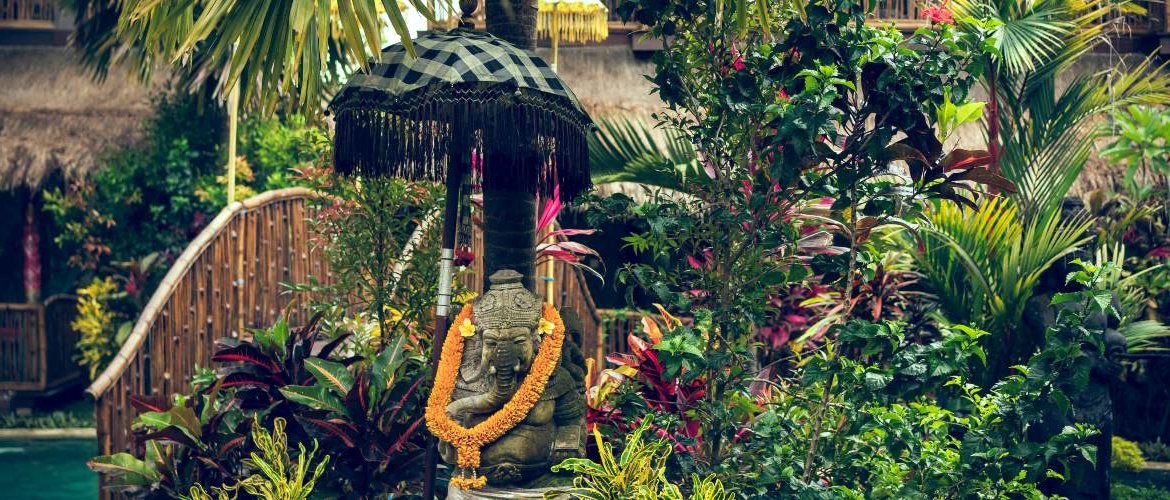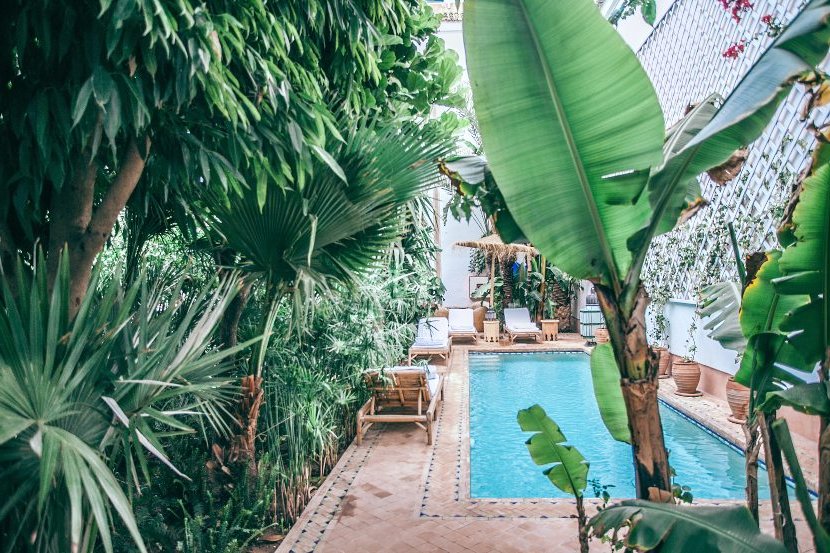Tropical landscaping: all the keys to an oasis garden
Whoever has a garden, has a treasure. There is no doubt about it. But betting on tropical landscaping is more than just letting nature dominate your exteriors. This style for the garden is to succumb to the charms of a vegetation of forceful bearing, with large leaves and intense tones that, at times, are able to move you deep into the lushest jungles.

A successful tropical landscaping proposal for your garden must be able to transport you to the very heart of the jungle, including lush vegetation and small details full of charm.
There are many styles for the garden. However, to find the most suitable one for your home, factors that go beyond the particular tastes of each one come into play. From the dimensions to the climate, through the time you have for maintenance or the type of soil, you should analyze them calmly if you want to turn your garden into a real garden. In any case, if you are determined to give it a tropical air, we tell you everything you need to know about this type of landscape design.

To think of tropical gardens is to think of spaces full of vegetation, where green is a main ingredient. This landscaping, typical of warm climates, is favored by long days, frequent rains and high and constant temperatures during a good part of the year. The sum of all this generates spaces that take us, inevitably, to the very heart of the jungle and it is there where you can find inspiration for the design of your tropical style exteriors.

Humidity or temperatures favor the development of a particular type of vegetation. Plants with large leaves and original flowers are more than usual in this type of proposals which, on the other hand, are dotted with organic shapes that relegate pronounced geometries to the background.

Among the many features that make tropical landscaping a very particular style, vegetation is undoubtedly one of the most interesting chapters. There are many species that you can include to give your garden a jungle look, although among the most popular are, for example, palm trees or bamboo.
In the case of the former, there are many varieties that you can include. This will facilitate the task of creating this type of garden, even if the weather conditions are not particularly similar to those of this type of environment. As far as bamboo is concerned, you can surprise with specimens up to 25 meters high.

Plants such as palms, bamboo or orchids have a place in tropical landscaping projects where, among other things, large-leafed plants and original flowers are the most important.
If we talk about flowers, there are also species more likely to be part of this type of gardens. The one known as "bird of paradise" -technically strelitzia- is very singular thanks to its flower and large leaves. The same goes for the heliconia, an ideal species if you are looking to give your garden a distinctive decorative touch.

Other common species that tolerate extreme conditions well and that you can include in your tropical garden are ferns or sansevieria. The latter is so hardy that it is also a common species for decorating interiors with plants. For their part, ferns are highly decorative. Orchids are more delicate but can adapt to other climates. Some of them typical of tropical climates can be an interesting resource to incorporate into the architecture of your outdoor landscape.

Be that as it may, remember that the indispensable condition for your tropical landscaping bet to be a success is humidity. If the area where you live does not lend itself to it, you will have to compensate for the absence of water artificially. Natural pools, ponds, fountains? Any of these ideas can be a good way to achieve this, in addition to a good irrigation system, of course.

And finally, a detail. Don't forget to include a path in your jungle garden. You can use stones or cobblestones and make it lead to some hidden place inside the patio. If you place some oriental-inspired statues there, you will surprise with a round tropical landscaping design!





